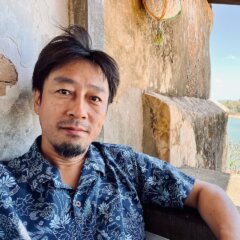取得学位・資格
博士(社会人類学) 東京都立大学 2003年
個人/所属ウェブページ
https://www.lalombe.info/
https://www.tmgh.nagasaki-u.ac.jp/professors/ken-masuda
ResearchGate/LinkedInアカウント
https://www.linkedin.com/in/ken-masuda-a8376327/
経歴
2004-2014 長崎大学環境科学部 准教授(環境人類学)
2008-2015 長崎大学大学院国際健康開発研究科 准教授(医療人類学)
2014-2024 長崎大学多文化社会学部 准教授(アフリカ地域研究、フィールドワークメソッド)
2015-2024 長崎大学熱帯医学・グローバルヘルス研究科 准教授(医療人類学)
2024-至現在 長崎大学熱帯医学・グローバルヘルス研究科 教授(医療人類学)
研究活動
- サブサハラアフリカにおける人口高齢化と社会的保護
- グローバルヘルス研究における人類学と民族誌的手法の応用
- 混合研究法を採り入れた健康希求行動の解明
現在の主な研究活動地域
サブサハラアフリカ全域(とくにケニアとエチオピア)、日本
最近の5つの出版物
-
Harada R, Imoto A, Ndunyu L and Masuda K. The reasons for and influences of unintended teenage pregnancy in Kericho county, Kenya: a qualitative study. Reprod Health. 2024; 21:143.
-
Miyachi K and Masuda K. A Preparatory Study of Care for Elderly Women in Rural Kenya. Arxiu d’Etnografia de Catalunya. 2021; 22:127-146.
-
増田 研・椎野若菜(編著)『現場で育む フィールドワーク教育(FENICS 100万人のフィールドワーカー第4巻)』古今書院. 2021.
-
増田 研「アフリカの高齢者ケアをめぐる「三つの神話」を問い直す:社会福祉と親族研究の接続領域から」、小池誠・施利平(編)『家族のなかの世代間関係:子育て・教育・介護・宗族』日本経済評論社. 2021; 285-312.
-
Masuda C, Ferolin SK, Masuda K, Smith C, Matsui M. Evidence-based intrapartum practice and its associated factors at a tertiary teaching hospital in the Philippines, a descriptive mixed-methods study. BMC Pregnancy Childbirth. 2020; 20(1):78.
Message
I began my research career in Ethiopia in northeastern Africa in 1993, conducting ethnographic research in an agro-pastoralist village of about 2000 people, describing context-dependent phenomena, and analyzing social structures and cultural norms through my own participatory observations. Thus, my research style is still back and forth between the field and desktop.
Cultural anthropology (and social anthropology) have a strong affinity for interdisciplinary research designs, and I do not hesitate to combine different research methods, including quantitative and qualitative research, observation, textual analysis, media analysis, historical and archaeological approaches, and cartographic analysis.

